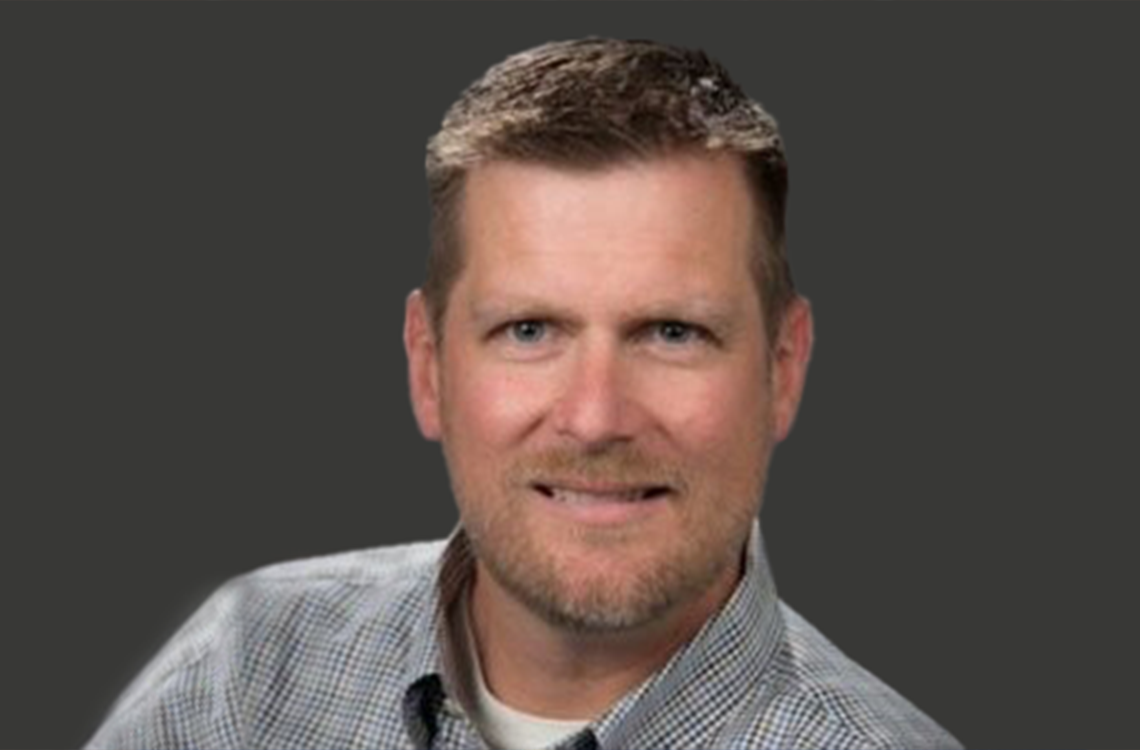Creating A Workplace That Attracts And Motivates The Best People With Sam Reeve And Sumit Singla
After 2020, everyone has gotten used to the flexibility of their work-life balance. So now that people are going back to their offices, they want a great workplace where they can just be their very best and stay motivated. In this episode, Sumit Singla and Sam Reeve talk about creating the right workplace environment. They share their thoughts on what motivates people to work, whether it’s the vision, personal value, or both. Learn why the hiring process is important for any business because having a mismatch of ideologies will cause chaos. Find out what it takes to make a great workplace so that everyone can motivate each other to be their very best.
—
Creating A Workplace That Attracts And Motivates The Best People With Sam Reeve And Sumit Singla
Welcome, everyone, to the show. We’re very excited to have you here. A little bit about what we do here, this is a mastermind of leaders. What we aim to do is create workplaces where people thrive, where employers reward, and customers love, so everyone is happy. My name is Jules. I am an on-camera coach, so I help people shot more confidently on camera, and I help to host these sessions as well. I want to introduce you to the rest of the panel. We mentioned Char, she is a People Strategist with CompTeam. She isn’t going to be with us, but she’ll be back. She’s getting scuba certified now.
We also have Sumit joining us. He has such an outstanding amount of experience in the world of HR. He’s consulted for so many huge global brands like Deloitte and Accenture. We’re very lucky to have him here joining us on this convo. We have Sam. Sam is the Founder and CEO of CompTeam. He’s the reason that we are able to be here. He’s going to be leading the conversation. Normally, we have an external speaker, but we’re keeping things a little intimate. We’re going to have Sumit and Sam to us about creating a workplace that attracts and motivates the best people.
I want to give a quick shout out too to our sponsor, TMA. If you want to stick around to the very end, we’re going to give you an opportunity to get a free assessment through TMA. This is a great way to find out your strengths, talents, and where your talents lie in order to find a position that best aligns with you and your skill set, because there’s no point in doing something like jumping into customer service if you don’t like people. We’ll give you an opportunity to get your assessment and it is free. Sam, if you’re ready, we can just jump on into the conversation.
There’s a lot of fun things to talk about as we kicked that off the conversation, a pre-session discussion. We were talking about creating workplaces, and what the workplace of the future will look like. There are people who have gone through so much last 2020. They’ve realized the desire to live life and have that flexibility is more stronger than ever, and having a workplace that is able to facilitate and be flexible to know the desires of the workforce and to provide that flexibility so everybody can have a little bit of extra fun in their life, and will create more of an engaged environment overall. That’s the big theme. Are you seeing some of the same pressures in your practice there, Sumit?
You want to make it so that when you're at home, it's 100% home time and when you're at work, it's 100% work time. Share on XYes and no, Sam. I’ve seen a change over the last couple of years from work-life balance to work-life integration. We used to think that work and life were almost like opposite sides of a coin. You had to strike a balance between the two somehow. Now specifically, thanks to the pandemic, we’ve got work and life happening at the same venue. There’s no disconnect and downtime.
I ran a poll about whether people miss their commute to work or not. Interestingly, more than 1/3 of the people said they missed their commute to work, because it’s a little bit of an opportunity to detach themselves from work and non-work time, and give them some window in between. The need to unwind, relax, and be ready for enjoying work and life is there, just as becoming a little more starting now.
That’s a good point. It depends on your work style and how your work is, depending on if you’re more work-life integrated or if you like to separate those and have a little break in between. When you’re at home, you’re 100% home time. When you’re at work, you’re 100% work time. There are different types of environments and styles that people like to do there. What I want to do is talk through the pieces of how to create a workplace that matters. As we’re speaking about this, there are elements of how we are looking about motivating our workforce, how do we engage, and then finally, reward.
As we can see what’s happening here, first is we’re looking at empowering people to succeed, then we’re trying to enable them so that they can do their best work, then also recognize and reward them with things that matter to them specifically in the workplace. In doing that, there are a lot of different things that we look at. I’m going to go through this in great detail.
We call the process the Workforce Experience Scorecard or Wx SCORECARD. This is a way to where we’re going to look at variety of different factors in the workplace. It’s almost like a gap analysis. We’re doing an evaluation. You can do this at your company, you’re looking at specific factors determining their strengths and possible weaknesses across the organization. A good way to do this analysis to evaluate the employee value proposition you have is that you can give out a survey on certain topics, or you can do an in-person interview. There’s a lot of ways you can gather this information.
The important part is that when we’re thinking about the workplace experience, this is not the same thing as the poll surveys you get, or the employee surveys that you give on a regular basis. This is something that is designed specifically to determine the strengths of your employer value proposition or the workplace experience. As we go into this process, we’re going to talk about a lot of these different factors, from vision, leadership, direction, teamwork. We’re going to go into how managers empower their people, do those people have an impact across the organization.

Great Workplace: After 2020, everyone realized the desire to live life and to have a workplace that can facilitate a flexible lifestyle. People need flexibility so everybody can have a little bit of extra fun in their life.
We’re going to talk about how to hire right, and ensuring that you have that good personal value alignment, so the values of the people that you hire are aligned with those that of the company. We’re going to talk about fulfillment. This is where we have balance in our life that we can grow in our career. We can do the things that we’re trying to do at home. The business is flexible to our particular stage in life that we have.
Finally, we’re going to talk about those reward elements such as being affiliated with a company that has a great culture or purpose out there, and other elements of rewards such as developing people and feel like you’re investing in them, making sure that you’re recognizing them for doing their best work. Also, those pieces that need to be right, such as compensation and benefits for your workforce. We’re going to talk about each of those pieces together.
It makes so much sense to quantify the workforce experience into something like a scorecard. If I had a penny for every time a client said, “The employee or the workforce experience is critical to our success,” I’d be at least a millionaire, if not a billionaire by now. I would ask them to define it for me. The silence was deafening. It’s fantastic to be able to quantify and put some measurable ideas together. That’s probably the strength of the approach that you’re talking about. It’s heartening to see all those factors pillared together.
When you’re thinking about this, the workforce experience does draw a blank when you’re thinking about what all creates that. Let’s go through that in detail and starting off with the first section here, the motivation, the general tenets of motivation, and this is how we empower each other to succeed. When we’re talking about these elements of motivation, the first thing that comes to mind is having the environment overall that’s inspiring. We’re trying to engage that innate motivation in us and those things that create a passion to do our best work.
The first thing that we’re seeing here is vision. We’ve heard tons about vision, whether it’s Simon Sinek is talking about the why and different things. Business schools talk about vision and mission. This is not a new concept, but let me put it in perspective of what we’re talking about here in the workforce experience. When we’re talking about vision, people want to work at a company where they feel inspired and learn agreement with where the company’s heading and what that company stands for. That’s the big piece here. Would you agree, Sumit?
Yes. That’s why you wouldn’t see medical device companies talking about their vision would not be to sell the maximum number of medical devices to the world. They would have a vision which talks about contributing to, or building a healthier world. If that inspires you, nothing like it. Whether it’s education services, manufacturing, automotive, any firm or company at all, if the vision is inspiring enough and it aligns with your ideals, that’s what will play a large part in motivating you to do a great job.
This applies to all companies. I’ve been challenged with certain people come up, “I own carwash outlets that are across several states. Are the vision and mission important to me?” I would say, “Yes, it is.” In the absence of having a vision and a mission together in a particular company like that, your workforce is coming there for one purpose alone, to earn their living. Their mindset around why they are working is created by their own paradigm.
What the vision and mission do is give them direction and a greater purpose of why the company exists. This is something that can increase the workforce experience and refocusing the workforce on the greater goal. In the situation of that carwash, the vision is inspiring people that are your workforce, that people come here because they buy these new cars. They’re excited about their purchase.
People want to work at a company with an inspiring vision where their ideals align with yours. Share on XA car is a significant chunk of change or investment for a lot of individuals. When they get this, they’re excited. They want to make sure they take care of their vehicle. They take it to the car wash and able to clean and take care of it in a way that’s better and more convenient than what they would find at their home.
It’s creating that vision of the fact that, “We are here to inspire you to feel the best about your vehicle, your brand-new purchase, and to get the most enjoyment out of your car.” There’s a vision for every company to the extent that you have it. It’s compelling to your workforce. They will be more engaged and want to work for your company, and be more motivated in their work when they’re aligned towards a common vision.
Another thing I would like to hear if you’ve come across this as well, Sumit, because this is one issue that I’ve seen. We have a vision, a mission and so forth. Their vision may be specific to where they want to be in that sense, but as far as their mission, they say, “We want to earn X amount of dollars by this amount of time.” They have that as part of their mission. As you can imagine, that can be fine for certain companies, but when you have a message like that in your vision and mission statement, what are your customers and employees going to think when they read that mission and vision?
A lot of times, people are saying, “Mission shouldn’t be so aspirational. We got to make it tangible and so forth like this.” I would challenge that, because if we’re looking at dollars in this particular situation, we’re going to earn X amount of dollars by X amount of time, your customers are going to be saying, “That’s great for you, but what is your mission? What is good for me? Going to a larger company that makes more money, how does that impact me as a customer? It doesn’t impact me at all, except I know that you’re trying to get money from me.”

Great Workplace: A Workforce Experience Scorecard is a way to look at a variety of different factors in the workplace. Like a gap analysis, you’re doing an evaluation of your company.
The same thing from the employees, they understand the goal. The goal is to make money as part of that mission, so they’re more money focused. They’re not focused on customer service, the experience and so forth. We need to be careful about what we are communicating both to our customers and our employees in this fashion.
In fact, by making sure that your vision is aligned to your customers and your employees, that’s the only index of success. One of my favorite examples is I was working with an agrochemical manufacturer. They used to manufacture pesticides and various kinds of additives for different kinds of chemicals used in agriculture. They could have had something straightforward like, “Our mission is to kill bugs,” or something of that sort, but their vision was, “Transforming the country through agriculture.”
They further elaborated on it by saying, “We’d like to make us a nation self-sufficient in agricultural produce.” That also appeals to their customer base, because the idea was not to simply sell stuff to you. They had an FMCG kind of a module, so the idea was not just to make maximum sales to you and run off. The idea was that you, as the farming community, are the people who are at the front lines, to transform the agricultural practices that we have here so that you’re successful, and in your success lies our success.
If we can build that messaging, that’s what would work best, whether it’s a big firm. This was a relatively small organization, but even if you take bigger companies like Adobe, their vision is a very simple statement, “Creating experiences that matter.” That can apply to vendors, employees, and customers. I can’t think of any stakeholder who would not be inspired by that vision.
That also comes into the next point, leadership, because having a vision and mission statement is very benign unless you communicate it well. You need to communicate and remind your workforce of your greater purpose of why we’re here. That’s important. Leadership needs to be able to communicate this. Also, on the other aspect of leadership and why it’s so important as far as the workforce value proposition or experience is when an employee is going to make a choice to work at a particular company, it’s an investment of their time and expertise and so forth.
If they’re thinking about this seriously, they’re going to be concerned about who’s at the helm. I often explain this by, if you can imagine the pre-colonial days in America, when we’re all in Europe and we’re going out to explore America in this new country, people going down to the docks to buy a ticket on a boat that’s going to take them across the ocean, those days were a little more dangerous than they are nowadays. It’s not like you just buy a plane ticket on a major airline. You got to think about, “Who’s the captain of this boat? Has this captain ever successfully made it over to America and back? Have they done this several times?” You’re going to be interested in the track record and the success.
If you get on this boat and the captain starts going in circles, and then you see some other boat goes straight across, you’re going to wish that you were on that other boat. It’s the same thing with leadership and companies. If you don’t have a strong, proven leadership, or at least a good plan of competence, then you’re not going to attract employees, or they’re going to leave you to go to potentially another company that does have good leadership.
A less dangerous example than the one you share that comes to mind is sports teams. As a player who wants not just to earn the big money, but who wants medals and trophies, you look for the right club and you also check whether they’ve got the right manager in place or not. What is the manager’s project? What are they trying to achieve?
The three pieces that run a business are the company, the workforce, and the customers. Share on XEven without that, you can keep earning the big money. You can get a big name and retire by the time you’re 35 with a lot of wealth at your disposal, but the good players are motivated by what’s the vision of the club, who’s at the helm, what vision does the coach have, what kind of system do they have, and how motivated are you to be a part of that set up.
That’s a good segue as well into the next piece in a sports analogy. We often are working with teams. That’s another piece where an employee is interested in learning how does the company work internally. If you’re a type of person that likes to work with a team of people that are very competent, can rely on one another, and can enjoy the work environment, there are companies that provide that. If you’re a person that likes to work alone or solo and be in charge of your own merit, there are companies that provide that as well.
Teamwork is important to understand what’s going on, and is it going to be creating a work environment that’s best aligned to you as an employee. Employers need to think the same way when they’re hiring, “Is this a team-oriented person, because we’re a team-oriented company?” or vice versa. It’s important to understand the team environment. The other thing that we have here that rounds out the motivation section of the Workforce Experience Scorecard is also the ability that the organization provides structured direction.
There are companies of all stages where they hire established professionals that come in and can work in a degree of ambiguity. They like putting their own spin on that structure and putting that together. There are other companies that hire younger, more inexperienced staff that needs a little bit more hand-holding and direction on developing their skills. It’s important for you to understand where you are as a company, understand the type of talent you’re trying to attract, and giving the amount of direction that is required for that demographic.
Direction and teamwork, they are the pieces that bring the relative intangibles of vision and leadership to life. They’re more easily observable than whether people are aligned to the vision or they buy into the leadership or not.
Let’s go to the next piece here that we’re talking about, this is engagement. This is how we work together for shared success. When I talk about working together, we’re not just talking about managers and employees, but we also have to think about our customers together. This is what I call the Three Legged Stool Concept. The three pieces that run a business are, the company, which includes the management and so forth. Your workforce or your coworkers. Your customers, those people that enjoy your products and services.
When we were looking at engagement, it’s important for us to create a biome that engages all of those factors. We’re going to talk a little about that in detail. The first part of this is empowerment. We’re talking about different ways of empowering our employees to do their best work in the organization. When we look at this, it’s ensuring that we have those regular touch points.

Great Workplace: It’s important for you to understand where you are as a company. Understand the type of talent you’re trying to attract. Give the amount of direction that is required for that demographic.
In America, we call those one-on-ones and so forth, where employees and managers get together on a regular basis. They talk about the work, performance, obstacles, and making sure that they’re in sync. I know that they have this all across the globe as well. Sumit, would you add anything there as far as how managers and employees communicate?
There is a culture into it, Sam. What I’ve observed in my part of the world is that managers have to work a little extra hard to empower people, because the way we are wired is we look to people in positions of authority to give us direction. Honestly, a manager who’s saying, “You decide how you want to approach this,” people might start thinking of that manager as a little incompetent, or not doing their job, whereas they’re just empowering you. At least in India and in certain parts of Asia, there are conversations around empowerment which need to be had, to set the right expectations and manage them as well.
The important part here, and especially more companies, are moving away from the traditional annual performance review to something that is more real time. It’s important to have these conversations that are around performance and enablement. Things should be covered in these conversations, such as, “Do you have everything you need to do your best work? Is there any development or training that is required for you to get to the next level or to get beyond this obstacle?” There needs to be shared accountability across performance as they’re talking about this.
This is part of the work experience, where if an employee knows that they’re going to come into a situation, they’re going to be supported by their manager and be able to do their best work, because they’re going to be worked together with their management and team to remove obstacles so they can pursue their best work. That becomes a more compelling and retentive work environment.
Leaders should reach out and solicit feedback from all levels of the organization. Make sure that every voice is heard. Share on XThe next piece on this is impact. When we talk about impact, let’s think about this from a big company to a small company perspective first. A lot of individuals, they want to work for a larger firm for the affiliation and the prestige of working with that company, the established brand, and what it means for a mission. Some of the downsides they have of working at a larger organization is that if they’re starting out, they’re buried in the infrastructure. The amount of impact that they have to the end customer is more limited.
In a smaller company, that is reverse. There are less people, less layers, and more direct customer and company impact for an employee. It’s a different value proposition. I often have companies come to me and say, “How am I going to compete with Apple? How am I going to compete with Google?” You don’t want to compete on the same grounds that their value proposition is going to be quite different than yours. They’re able to afford a larger pay package.
They have different elements of the employee experience that they can provide. When we’re looking at smaller companies that are competing with those larger companies, they can have quicker career advancement, more types of job duties that they can explore, and they can have more impact on the organization and the customer. There’s a different value proposition.
That’s probably why many mid-career people in larger firms start moving towards smaller ones, because they’re not looking to the cogs in a large machine. They want to create more impact. They want to be more in control of what they’re doing. One can create, which is not to say that larger companies don’t create impact or people cannot be impactful in them, but there are people who like higher degrees of empowerment away from strict policies, controls and processes, and more opportunities to create impact, which is where their engagement leads them into this setup. What’s your opinion on that, Sam?
What I would often come across in other avenues of impact that’s very important is how the leadership embraces this. A lot of times, we’ve talked about impact in the context of the employee and the employee experience, but what’s often missing is leaders have a specific role to play here. This is in the value of the one-on-one, or even more senior leaderships reaching out to the organization and asking advice and opinions from those lower in the organization.
A lot of individuals low in the organization don’t feel like they have good leadership access. The leadership is not reaching out to them to hear what they think about the business and how the impact on the customer is. We often encourage leaders to reach out and have good communication with all levels of the organization to solicit feedback about what’s going on at their level of the organization, and have ensure that those voices are heard so those people can feel like they’re more connected to leadership and organization, and they can have an impact.

Great Workplace: The important thing with personal value is to ensure that you’re hiring people that have values that are aligned with the company. A mismatch can create big problems.
In fact, it struck me. Some of the aspects we spoke about like vision, leadership, and impact, a lot of it also depends on how well or how badly it’s communicated. One story which popped into my head was that there are these two men who are laying bricks for a building. Somebody came up and asked the first guy, “What exactly is it that you’re doing?” He gets a little annoyed and says, “Can’t you see? I’m laying bricks.”
This person goes to the second person and says, “What exactly is it that you’re doing?” He says, “I’m building a cathedral.” It talks to the vision and the impact part of it. The fact is that it’s not only a leader’s responsibility to convey these things to you, as an employee, you also are as a team member. It’s something that you need to demand as well, that I need to know what is the impact that I’m making. Am I just a paper pusher or sitting at a desk? What exactly is the impact of the actions that I’m taking on a day-to-day basis?
It’s good to be reminded about that overall vision on a regular basis of why we’re doing this. Sometimes, in the middle of the minutia of work, we might be doing a task that we particularly don’t enjoy or something, but when we have the mindset of the greater purpose, it’s more understood of why we need to do this and get through this particular hurdle. It’s important there.
The next piece here that we need to talk about is a personal value and also how it’s related to fulfillment. Personal value is quite important, especially when you’re recruiting people for your organization, when you’re sourcing the correct people. The important thing with personal value is to ensure that you’re bringing people into your company that has values that are aligned with the company values.
In business, a bad apple can spoil the good bunch of apples in your barrel. Not everyone is a good fit for your company. Share on XIf you have a mismatch here, then you can create big problems in your culture, dissatisfaction, and bringing in a person that could be at odds with the overall culture. A metaphor that we used is having a bad apple in the bunch, which means that a bad apple can spoil the bunch of good apples that you might have in your barrel. That’s the reason why you need to make sure that your personal value is lined. Not everyone is a good fit for your company. It’s important to hire right in this capacity. The other thing is how we can ensure that leaders enforce or encourage the alignment of personal value.
They need to talk about values. From a business school perspective, we say it’s good to set up a mission and a vision and have values in all of these things, but how do we put these things to work? They’re not just words on a paper or checking the box on something. We need to make it work. This is where the values piece comes in. The reason why it’s important to communicate values across the organization is it gives you overall guidance of how we should act and behave on a regular basis, and those values help keep us in certain guide rails of what’s acceptable in the organization. The next is making sure you’re hiring right.
The other piece that is closely related to this is fulfillment. Fulfillment is closely related with the type of people you’re trying to hire in your organization, and how you’re retaining them throughout the work experience. For instance, we all go through different stages of life. We start off getting out of college or trade school, and we’re entering the workforce. We’re green. We have low experience. We need some help getting established and getting that experience in place.
As we become a developed professional, we’re interested in that growth, wealth accumulation, and focused on the work and building our talents. We meet that special someone that we want to spend some time with and invest some time in, and perhaps have a family. Things take a different turn. We were focused at home and at work. There are a lot of different things that we were concerned about.
Those kids, they develop and we are investing for their school, or launching them into the world. We enter a different cycle of life when we are back with our spouse, and you’re starting to think about retirement, “What is the end game look like for me? Where I’m going to have time to relax if that ever happens finally?”
Those different phases of life, how can your business navigate through all these different phases to the extent that you’re not willing to navigate your workforce through these different phases, you’re going to have more turnover? It’s important for us to think about this as an employer and think about these different sets or stages of our employees, and how to manage those and create programs that are compelling to them at certain times.
It’s probably also why a lot of employers now, they provide opportunities to contribute back to the community in different ways. You can donate a certain percentage of your salary. There are giving programs where large companies like Accenture, they’ve got these systems where you can decide to donate a certain percentage of your salary increase or even your paycheck to a good cause. You can select the cause yourself.
There are also employer-run schools, animal sanctuaries, and stuff like that where you can feel more fulfilled. Fulfillment at work is one part of it. Fulfillment in terms of giving back to the community and doing something to make the world better than it was when we first came into it. That’s another part of it.
That’s a piece where a lot of the workforce is looking for in their employer. They want to donate or give their time to an employer that is going to have a strong vision and is not all in it for themselves. They’re in it for the community, for the global community as well. That brings us to some of the pieces of reward. This is how company customers and coworkers all share in success. There are different factors here such as we talked about culture a little bit, and this is culture in the aspect of being affiliated with this particular company.
Is it a culture of purpose? It’s not the fact that, “Do we have a pinball machine and lounge chairs in the break room?” It’s, “Do we have a culture of innovation? Are we known as innovators here? Are we known as stewards of the environment?” Typically, when you’re looking at your purposeful culture, you want to make sure that it’s aligned with your vision. This is a compelling area. It rewards people on a regular basis to be affiliated with your company and to be employed there. This is the reward for being there.
What I like about the graphic here is the fact that culture fits under reward, because how I like to view it is that, working in a great culture is a reward in itself. There is research which says that building a great culture has monetary value. People would be happier to take a pay cut and work for a great culture than to be a highly paid, but in a culture of toxicity. It’s brilliant that the scorecard has culture and reward so closely intertwined.
A lot of people would say this whole experience here is part of culture. That is true, but in this particular context, we’re talking about a purposeful culture, and a culture that creates affiliation, which is the reward aspect. The next piece here is development. This is in a reward category, because when people come and invest their time into an organization, they want to feel like that they’re being invested in, that they’re going to have some gain from their affiliation with that company.
That either comes into the fact of career advancement, or having more breadth and depth of your particular skill set and becoming a known expert, perhaps a manager, or entering into project management field track. There are a lot of things when we look at development that is important for everyone. Even when we’re looking at those senior leaders, there’s a development that’s needed. A lot of companies feel that we don’t need to develop our leaders because they’ve learned through experience and they’re all knowing.
Nowadays, we know that it is not true. The world changes around us. The environment creates elements for new learning all the time, so everyone needs to learn. Companies that have mentorship programs and reverse mentorship programs to help foster internal learning is a great advantage of retention and rewarding those individuals to be successful in their career.
I was thinking about development. One is the formal developmental programs. There have been organizations that have been known for their investments in that front. The other is also developing by working with the right people and with some of the best in the industry. I don’t know what you think about that as the development pillar, but that would also be valuable. You should never be the smartest person in the room. If you want to keep learning, it’s a good idea to surround yourself with people who are way smarter than you are, so that you can get some of that learning and it rubs off of you.
Getting back to your favorite sports analogies there, I’m sure everybody who might’ve had some experience when they go and play tennis. I notice this every time I play tennis with my kids. I go out there, we’re knocking the ball around and I’m fumbling up as much as they are, but then I go and play with my brother-in-law, who’s an avid tennis player, I have to up my game. Suddenly, I’ve gained some skill set and I’m able to return the ball here and there. The people around you have a great influence on your ability to perform and it inspires you to perform.
In this case, I wasn’t thinking of sports. I was thinking of Sir Isaac Newton. He said something brilliant, which was, “If I have seen further, it is by standing on the shoulders of giants.” He was trying to explain that his accomplishments came only because a lot of other people had done some great work, and he was able to interpret some of it to build something of value. That sums up development for me.
Thinking about how this relates with recognition, I’ll tell you a story that relates to this. When I was at Barclays early in my career as part of their innovative investment group where they were creating these innovative investment products, this is where I was developed. If anybody knows what exchange traded funds are way back then, it was a new concept.
They were all around innovation. How to foster innovation with your reward programs, what they would do is they would have an annual event where everyone in the company was able to participate in this event around innovation. From the highest level to the lowest level, it didn’t make any difference if you were a portfolio manager or a janitor. You were involved in this innovation piece.

Great Workplace: You want to make sure that your purposeful culture is aligned with your vision. Reward people on a regular basis for being affiliated and employed with your company.
The challenge in your area was what are the top innovations that you can do to improve the experience of our customers or the workplace experience. That challenge was issued to everyone. Sometimes you would get portfolio managers coming up with this new innovation or technique that was able to generate more return, or a better customer experience, or something internally as being able to, “We’re going to get rid of these reports, enhance these reports, and do these things for the better internal working area.”
All of this was gathered and a committee was put together to evaluate all the entrance of innovation that came through. They would give recognition to those that moved the needle the most and give out rewards. It didn’t make any different what level it was, you had this element of recognition. This is an area where we can look at development, so we can challenge people to look beyond their current role and look at others in the organization for innovation concepts, and that recognition component built into it for an overall reward package that makes a difference and moves the needle as a company. It’s a great program.
It brings us to the final pillar. I am in the compensation business. I advise companies on not only the talent experience, but how to focus behaviors through pay programs. As I created this model, I put comp and benefits as its own pillar, this one little pillar out of this entire workforce experience. The reason why that is because all this other stuff needs to be working in function and to the extent that you have a weak employee value proposition, compensation has to go up.
If you have a strong employee value proposition, compensation doesn’t have to be as competitive. It can be at the lower end of the scale. It always needs to be within a competitive range, but where you are in that range depends on how strong your employee value proposition is. Compensation and benefits are places that we need to make sure that is right.
To the extent that you have all these other things in place, we can use it to focus behaviors and performance in certain roles. It needs to be used appropriately for the appropriate type of jobs. There are those that are intrinsically motivated and extrinsically motivated in compensation. Recognition needs to be used differently in those different types of roles. It’s very important to understand the balance in each of those.
One of the underrated components here is the benefits part of it. I was reading some research which says that more than 80% of people in the US don’t even open their benefits manuals. They only start looking at benefits when they’re trying to look at health insurance and when the need arises. It’s a great way to tell people that benefits have a monetary and non-monetary value. They add a lot to your entire employment or the workforce experience.
As we look at all this and you’re doing this analysis at your company, you’re looking at the workforce experience and evaluating these concepts, you’re going to come out with a pattern where you can say that there are some strengths and weaknesses across the organization. In this particular graphic, there’s some that are in green, which is good. Red is bad. Yellow is mixed in the middle. If we look at this particular company, they have strong vision and very good leadership and therefore a great teamwork.
Those leaders can empower their employees to do their best work, and perhaps even develop them well and have good pay and benefits, but perhaps they have a real problem in hiring the right people. If they hire people that are not aligned with the organization’s values, then those people are going to have problems with the particular fulfillment or achieving that they’re being feel fulfilled in their job.
That might even hurt recognition because since they’re operating differently at a different value standpoint from the company, I can get a lot of attention or recognition as doing a job that’s aligned with the company values, so that could suffer. Also, that will slowly drag on the culture as far as having that bad apple in the bunch. The more that you hire people that are not aligned with personal values, the more trouble you’re going to find long-term. This brings in the reason why we’re big fans of the TMA Method.
The TMA method, through the assessments that this tool gives, we give an assessment to our workforce, and it’s based on positive psychology. There are no right and wrong answers. It’s learning about their work style, preferences, how they work together, and how you interact with them. It’s a launch pad for career development, competency development, advancement and happiness in your organization. It’s a great tool that can help facilitate this workforce experience. Jules.
I hope you enjoyed this. I was scribbling notes on my phone this whole time. There’s a lot we can take away from this. Whether you’re an employee or an employer, it’s so applicable to both sides. It shows you what to look for if you’re going for a new job in a company. If you are hiring, it’s the other way around. I love this. Thank you, Sam and Sumit. This was great. I’m sure everyone else enjoyed it. I also loved the pillars, it’s like the roadmap. It gives you exactly what factors you need to consider.
To break it down, you need to find people that align with your values, give them all the tools that they need to empower and motivate them to help move the needle in your company and reward them for doing so. It breaks down nicely, it makes it easy. Get that free assessment if you haven’t done it already. It’s a great way to see your strengths, talents, weaknesses, and what you’re good at. In that way, it’ll help you align because we’ve been talking a lot about alignment, so jump on that. You guys are great.
Thank you everyone for reading. It was great having you.
Important Links:
About Sam Reeve
 Sam is the CEO and founder of CompTeam. His core focus is leading companies through transformational change by optimizing talent initiatives with reward programs to achieve long-term strategic objectives. Sam’s diverse experience includes the design and optimization of performance-driven variable compensation plans for executive, sales and core employee populations of growing companies. Prior to founding CompTeam, Sam has worked in compensation functions of notable firms such as BlackRock, McKesson and Automatic Data Processing (ADP). Sam is a global certified compensation consultant (CCP, GRP) with over 20 years of experience in Total Reward Strategies.
Sam is the CEO and founder of CompTeam. His core focus is leading companies through transformational change by optimizing talent initiatives with reward programs to achieve long-term strategic objectives. Sam’s diverse experience includes the design and optimization of performance-driven variable compensation plans for executive, sales and core employee populations of growing companies. Prior to founding CompTeam, Sam has worked in compensation functions of notable firms such as BlackRock, McKesson and Automatic Data Processing (ADP). Sam is a global certified compensation consultant (CCP, GRP) with over 20 years of experience in Total Reward Strategies.
About Sumit Singla
 Sumit Singla is the Founder of eleventHR Consulting. Sumit has been working in HR & HR consulting roles for 16+ years across sectors and verticals and specializes in organization design, wellbeing, storytelling & design thinking, and performance management. In his career with consulting firms such as Aon, Deloitte, and Accenture, he has successfully led programs aimed at total HR transformation for clients. Recently, as Associate Director for India Consulting at Deloitte, he worked with clients on cultural transformation and HR process and policy design. He also organized and spoke at conferences and events about a variety of topics relevant to HR today. Now self-employed, he works with clients across the globe on a variety of HR solution areas.
Sumit Singla is the Founder of eleventHR Consulting. Sumit has been working in HR & HR consulting roles for 16+ years across sectors and verticals and specializes in organization design, wellbeing, storytelling & design thinking, and performance management. In his career with consulting firms such as Aon, Deloitte, and Accenture, he has successfully led programs aimed at total HR transformation for clients. Recently, as Associate Director for India Consulting at Deloitte, he worked with clients on cultural transformation and HR process and policy design. He also organized and spoke at conferences and events about a variety of topics relevant to HR today. Now self-employed, he works with clients across the globe on a variety of HR solution areas.




